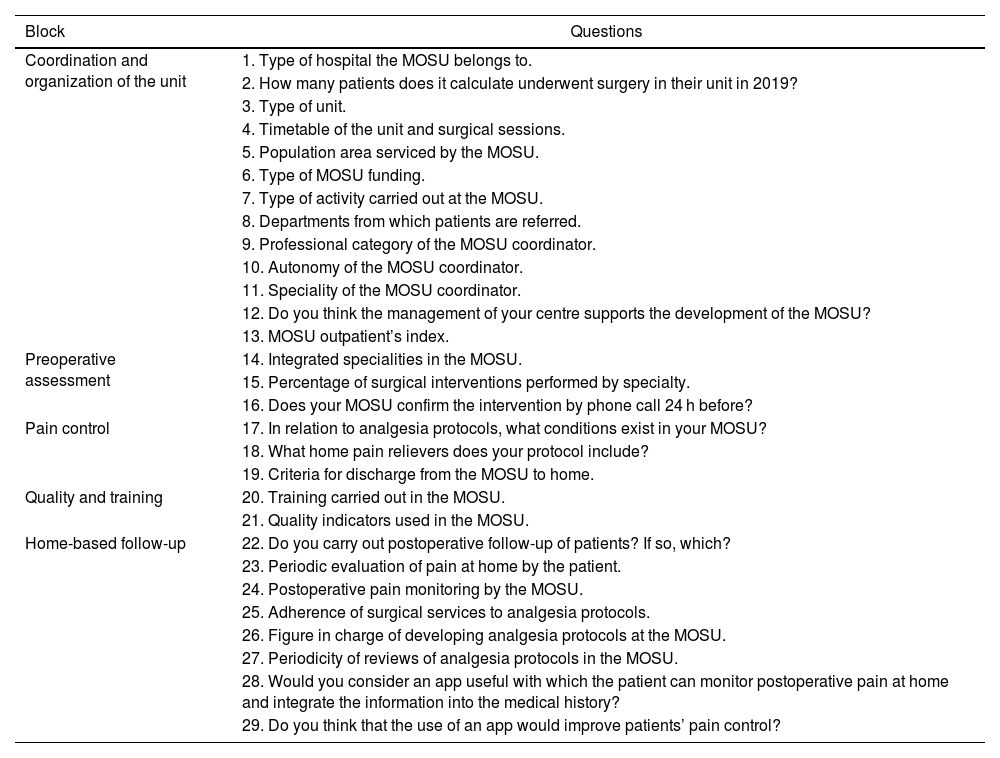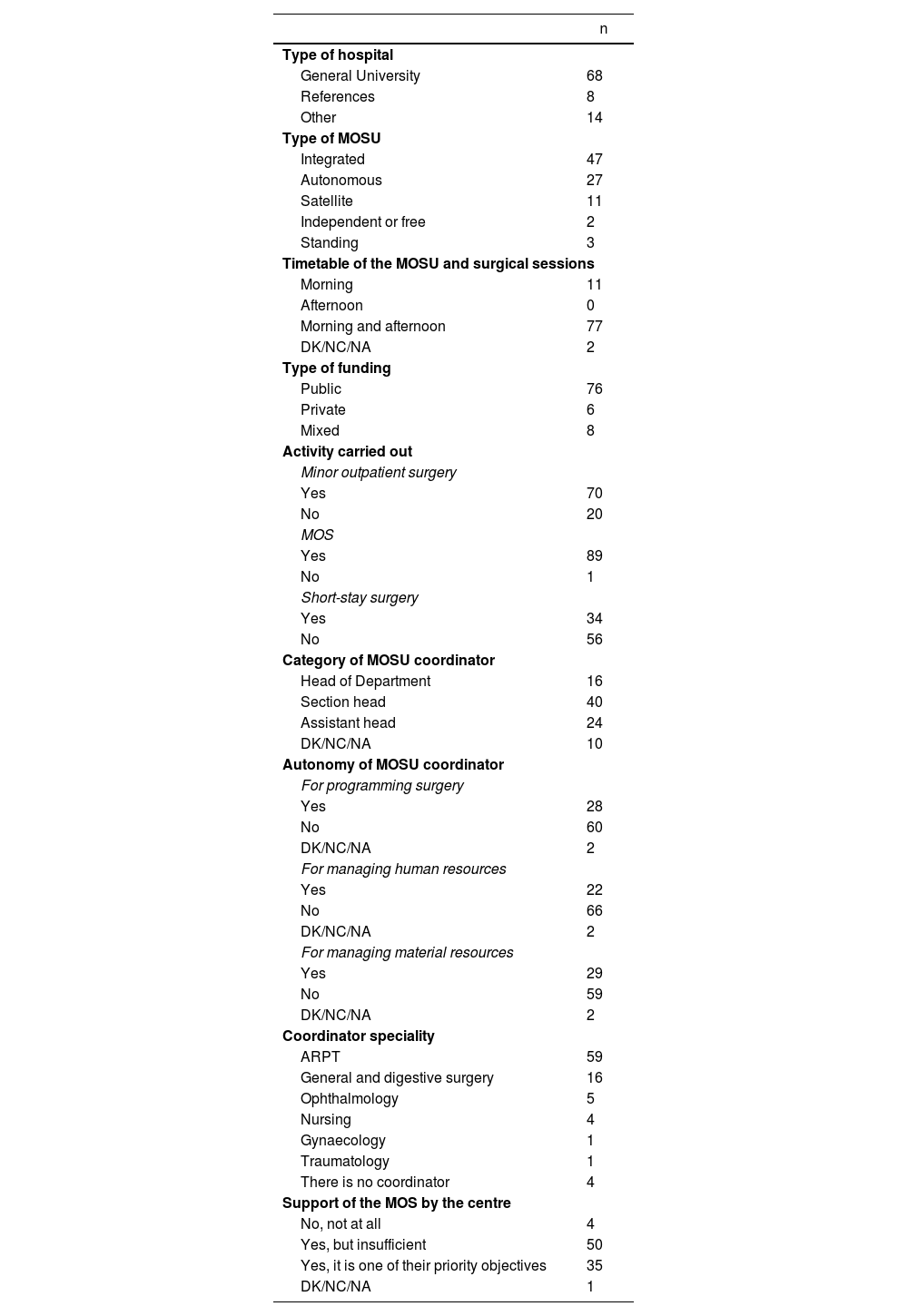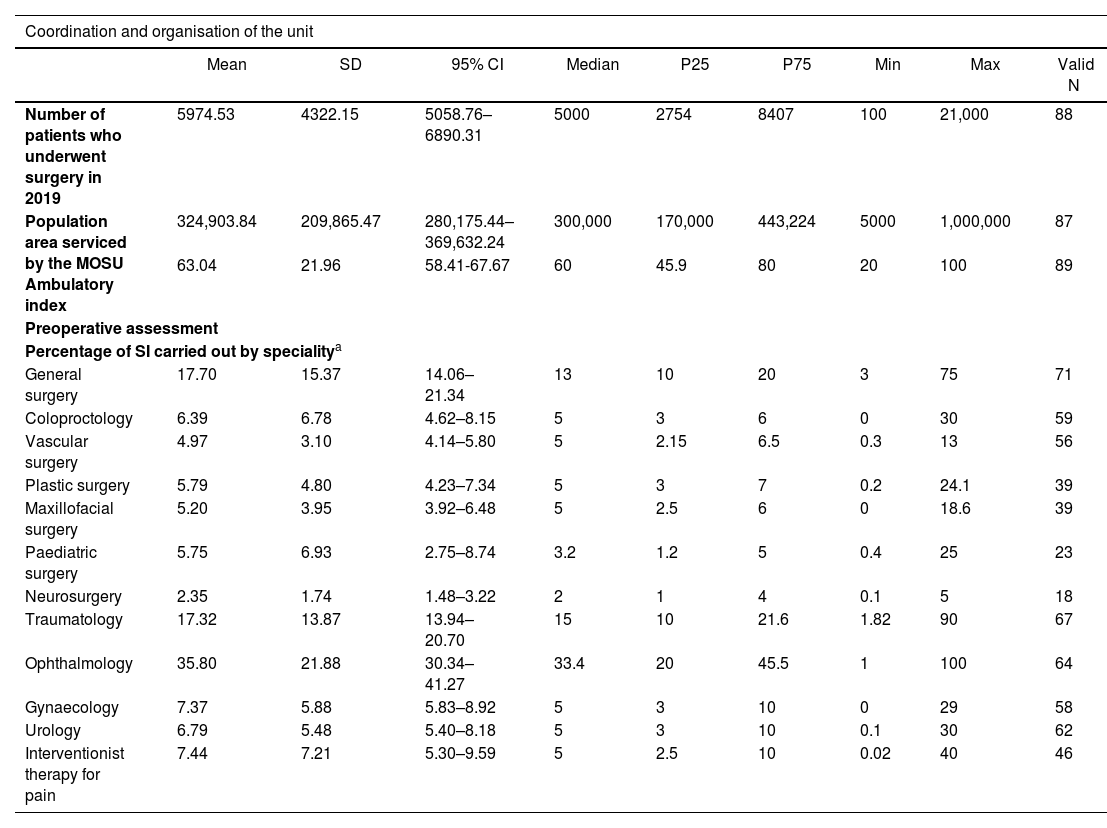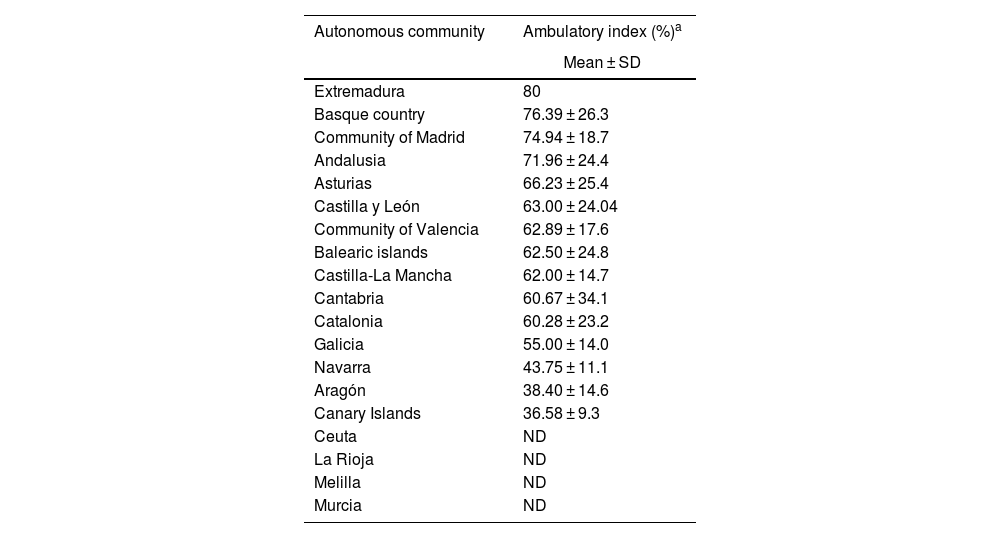Ambulatory surgery is a safe and efficient management system to solve surgical problems, but its implementation and development has been variable. The aim of this study is to describe the characteristics, structure and functioning of ambulatory surgery units (ASU) in Spain.
MethodsMulticenter, cross-sectional, observational study based on an electronic survey, with data collection between April and September 2022.
ResultsIn total, 90 ASUs completed the survey. The mean overall ambulatory index is 63%. More than half of the ASUs (52%) are integrated units. Around half of the units provide training for physicians (51%) and for nurses (55%). The most frequently used quality indicators are suspension rate (87%) and the rate of unplanned admissions (80%).
ConclusionsGreater coordination between administrations is needed to obtain reliable data. It is also necessary to implement quality management systems in the different units, as well as to develop tools for the adequate training of the professionals involved.
La cirugía mayor ambulatoria (CMA) es un sistema de gestión seguro y eficiente para resolver los problemas quirúrgicos, pero su implantación y desarrollo ha sido variable. El objetivo de este estudio es describir las características, la estructura y el funcionamiento de las unidades de Cirugía Mayor Ambulatoria (UCMA) en España.
MétodosEstudio observacional, transversal, multicéntrico basado en una encuesta electrónica, con recogida de datos entre abril y septiembre de 2022.
ResultadosEn total, 90 UCMA completaron la encuesta. La media del índice de ambulatorización (IA) global es de 63%. Más de la mitad de las UCMA (52%) son de tipo integrado. La mitad las unidades imparte formación para médicos (51%) y personal de enfermería (55%). Los indicadores de calidad más utilizados son la tasa de suspensiones (87%) y de ingresos no previstos (80%).
ConclusionesSe necesita mayor coordinación entre administraciones para obtener datos fiables. Asimismo, se deben implementar sistemas de gestión de calidad en las unidades y desarrollar herramientas para la formación adecuada de los profesionales implicados.














